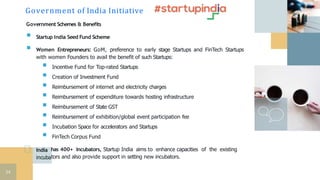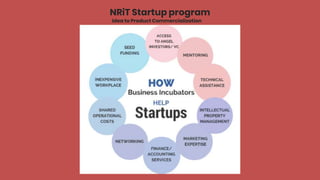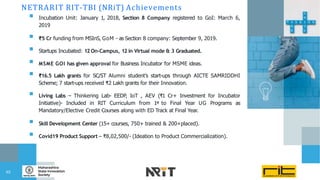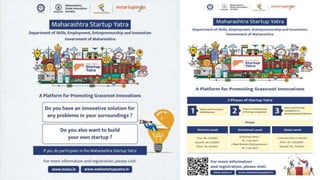The document discusses various topics related to innovation and entrepreneurship. It defines entrepreneurship and discusses entrepreneurial traits. It also defines technological innovation and explains the importance of innovation for economic growth. The document discusses different types of innovations, including product, process, incremental, and radical innovations. It further explains innovation measurement and factors that influence innovation performance like innovation posture, propensity, and performance.
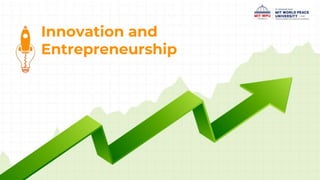
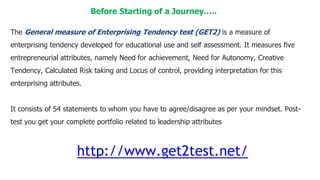





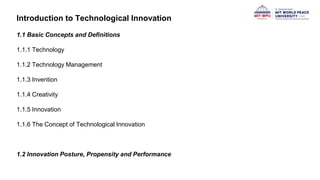

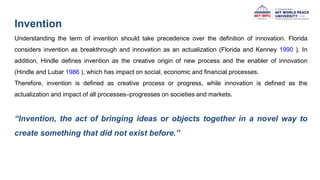






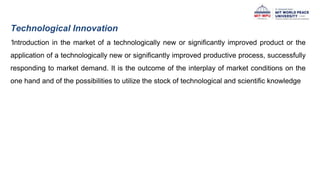
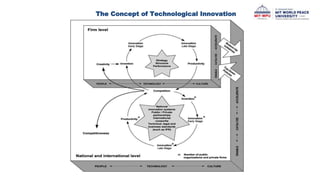












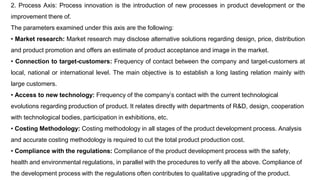

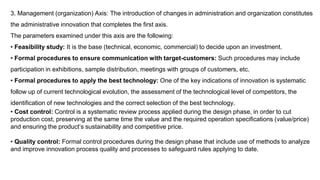
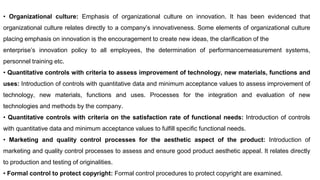

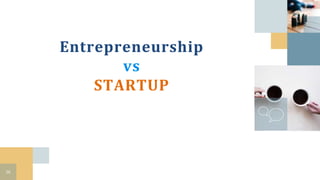
![Introduction
Entrepreneurship
Entrepreneur is a person who identifies the opportunity in a market place and uses its
resources in order to earn profit while taking risk evolved with it.
In economic terms entrepreneurship is defined as a factor of production, at par with
land, labor, natural resources, and capital;
And the surrounding in which entrepreneur operates is termed as Entrepreneurial
ecosystem which is basically composed of three types of attributes namely Cultural,
Social and Material attributes
Entrepreneurial ecosystem can be defined by various authors and scholars as: The
combination of interdependent actors and factors integrated in such a way that results
into productive entrepreneurship in particular territory
Entrepreneurial ecosystem is defined as a interconnected groups of actors in a particular
local geographical community committed to sustainable development through the
support and facilitation of new sustainable venture
[Sonkar S, et al.]
3
7](https://image.slidesharecdn.com/mitie-230216174631-3983536d/85/MIT-IE-pptx-37-320.jpg)
![Introduction
Startup
An entity shall be considered as a Startup:
Company Age: Period of existence and operations should not be exceeding 10 years
from the Date of Incorporation
Company Type: Incorporated as a Private Limited Company, a Registered Partnership
Firm or a Limited Liability Partnership
Annual Turnover: Should have an annual turnover not exceeding ₹100 Cr for any of
the financial years since its Incorporation
Original Entity: Entity should not have been formed by splitting up or reconstructing an
already existing business
Innovative & Scalable: Should work towards development or improvement of a
product, process or service and/or have scalable business model with high potential for
creation of wealth & employment
[Department for Promotion of Industry and Internal Trade, DPIIT]
3
8](https://image.slidesharecdn.com/mitie-230216174631-3983536d/85/MIT-IE-pptx-38-320.jpg)

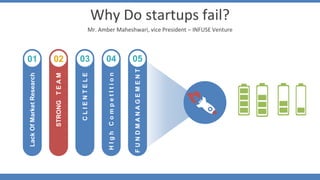
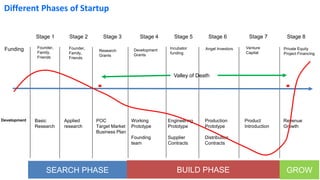


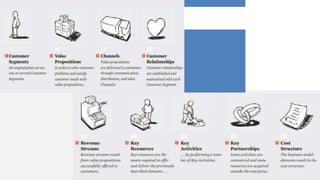




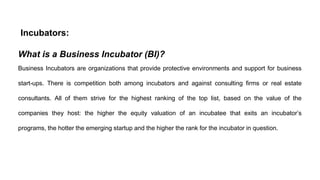

![Government of India Initiative
Key Pillars of Support for Startups
Simplification and Handholding: Easier compliance, easier exit
process for failed startups, legal support, fast tracking of patent
applications and a website to reduce information asymmetry.
Funding & Incentives: Exemptions on Income Tax and Capital Gains
Tax for eligible startups; a fund of funds to infuse more capital into
the startup ecosystem and a credit guarantee scheme.
Incubation & Industry-Academia Partnerships: Creation of numerous
incubators and innovation labs, events, competitions and grants.
Startup India Action Plan
Startup India 5-year Report
Startup India Way Ahead
[https://www.startupindia.gov.in/]](https://image.slidesharecdn.com/mitie-230216174631-3983536d/85/MIT-IE-pptx-51-320.jpg)
![Since the inception of the initiative:
Over 66,000 startups have been recognized with the Government
These startups are spread over 623 districts from 30 States and 7 Union Territories of
India
A ₹10,000 Cr ‘fund of funds’is being managed for growing the domestic venture capital
industry
A ₹1,000 Cr Startup India seed fund has been launched in 2021 to aid setting up and
growth of new startups
Creation of 5.2 lakh jobs across the country, with 45% of them having a base in Tier 2 -
Tier 3 cities
India is the largest in number of startups being added every hour (4 startups/per hour),
3rd largest in number of startups and the 3rd largest unicorn community
32 Regulations simplified for startups – including Angel Tax
Over 220 Income Tax Exemptions
Over 250 SIDBI Fund of Funds [https://www.investindia.gov.in/startup-india-hub]
Government of India Initiative
52](https://image.slidesharecdn.com/mitie-230216174631-3983536d/85/MIT-IE-pptx-52-320.jpg)

